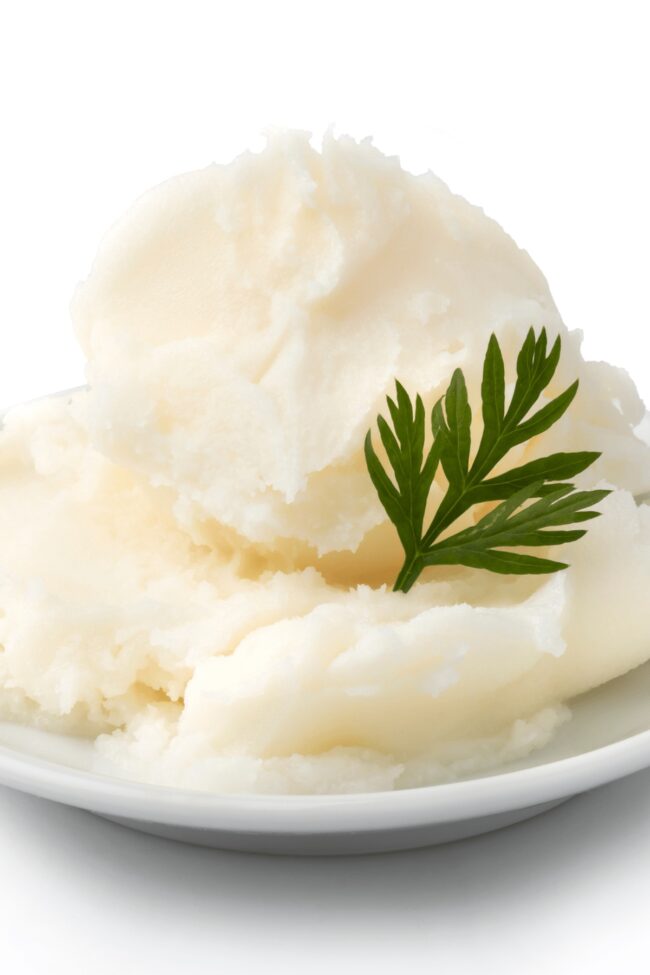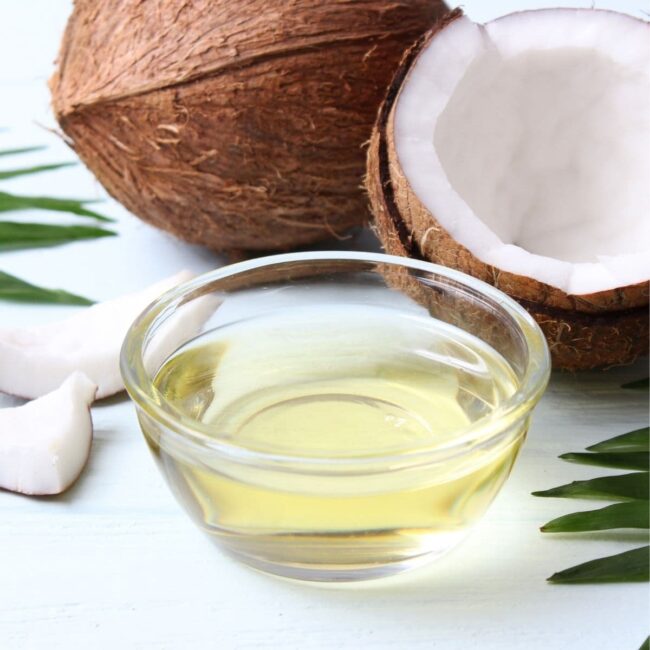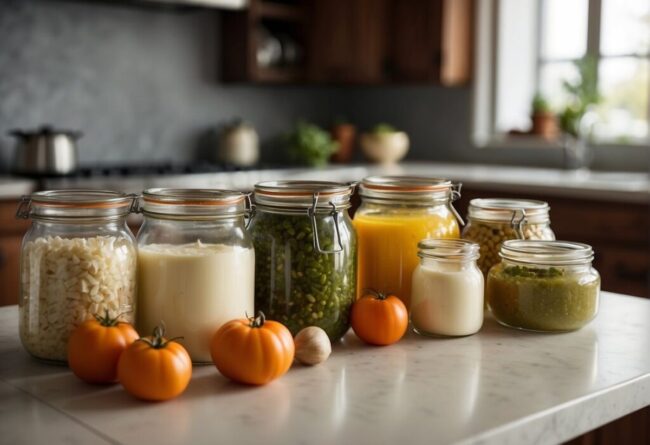4 Tasty Swaps for Vegetable Shortening
Vegetable shortening substitutes keep baked goods flaky and light without changing the final texture.
Some options offer a neutral taste, while others add a touch of richness.
Pie crusts, pastries, and fried foods maintain their signature crispness with a smart replacement.
Every recipe turns out just as golden and tender with the right swap.
What to Know About Shortening
Shortening is a solid fat used in baking to create flaky textures. It is often made from vegetable oils and lacks moisture like butter or margarine.
What is Shortening?
Solid at room temperature, shortening is a type of fat essential in cooking and baking.
This ingredient lacks a strong taste, making it versatile for many recipes.
A key characteristic involves its ability to hinder gluten formation, resulting in softer baked goods.
Originally, the term referred to any fat that provided this benefit but now mainly identifies hydrogenated vegetable oils.
All-purpose shortening blends different fats for general use across various dishes.
High-ratio shortening contains more fat and is often preferred by professional bakers due to its excellent moisture retention properties.
Fats in Baking
Baking relies heavily on fats for various important roles.
These ingredients enhance the texture and richness of treats.
Tenderness results when fats shorten gluten strands, creating a light and delicate crumb in pastries.
Incorporating air into batter occurs when fat is creamed with sugar, which aids in rising during baking.
Flavor enhancement happens as fat absorbs and carries taste, making each bite more enjoyable.
Retaining moisture helps keep baked goods fresh for longer periods, contributing to their overall appeal.
Recognizing how shortening works allows bakers to adjust recipes effectively for desired outcomes.
Vegetable Shortening Alternatives
Common vegetable shortening substitutes provide different textures and richness for baking and frying. These alternatives offer healthier and dairy-free options.
Butter vs. Margarine
Margarine serves as a close match to vegetable shortening, offering a similar fat content.
This option can be swapped in recipes at the same amount, ensuring comparable texture.
Butter stands out for those who desire deeper flavors in baked treats.
It’s important to note that butter has water, which can lead to denser results than using shortening.
Choosing between these fats depends on personal preference and desired outcomes in baking.
Each ingredient brings its own character and qualities to dishes, making them versatile choices for cooks.
Animal Fats and Lard
Animal fat known as lard serves as an alternative to shortening, enhancing the flakiness of pie crusts and pastries.
This solid fat at room temperature carries a unique flavor that can affect the taste of various dishes.
While other animal fats like beef or duck fat can replace it, they are less frequently used and add a savory taste that might not work in every recipe.
Lard stands out for its ability to create tender baked goods while maintaining a delightful texture.
Choosing lard brings depth to flavors, making it a valuable ingredient for those who appreciate rich tastes in their cooking.
Plant-Based Cooking Oils
Using vegetable oils such as canola or olive oil serves as a suitable liquid alternative in baking.
These oils add moisture to baked goods due to their fat content, but they may not achieve the same texture or rise that shortening provides.
In recipes where creaming fat is not essential, these oils work well.
Keep in mind that the absence of water content affects the final product's flakiness and overall structure.
Opt for them when you seek a moist outcome without needing that classic buttery lift.
Plant-Based Substitutes
A variety of vegan options exist for those seeking substitutes for shortening.
Coconut oil serves as a solid choice, staying firm in cooler conditions and easily replacing shortening in equal amounts, though it might introduce a hint of coconut flavor to the dish.
Vegan butter stands out as an excellent alternative that replicates the taste and qualities of traditional butter without using animal products.
For another option, palm oil resembles shortening's texture but raises some environmental issues due to its production methods.
All these choices allow for versatility while catering to plant-based diets.
Finding the right substitute can enhance your culinary creations while being mindful of dietary needs.
Helpful Cooking Tips and Tricks
Helpful cooking tips include using the right amount of fat and adjusting for texture. Understanding substitutions ensures consistent baking results.
Temperature and Measurement Tips
Getting the right measurement and temperature matters when using substitutes for shortening.
Coconut oil can replace shortening in equal amounts, but it needs to be at room temperature for the best results.
This oil solidifies when temperatures drop below 76 degrees Fahrenheit, so it should feel soft yet firm while being measured.
Cold butter plays a crucial role in making flaky pie crusts, so keep it chilled before use.
For recipes that call for melted shortening, melt your chosen substitute carefully to prevent burning by keeping an eye on its smoke point.
Mixing Methods and Tips
Using substitutes in baking changes how techniques work.
When replacing butter, start by cutting cold butter into small cubes.
A pastry blender helps blend it into the flour until the mixture resembles pea-sized crumbs.
This technique results in a tender and flaky pastry.
For coconut oil, treat solid oil like butter during preparation.
If liquid, mix it as you would with other oils while being careful not to overwork the dough to avoid making it tough.
Properly Storing Substitutes
Practical tips help in replacing vegetable shortening without losing texture or flavor.
Coconut oil requires storage in a cool, dark area to maintain its solid form.
When kept in the refrigerator, allowing it to return to room temperature before measuring ensures accuracy.
Butter needs refrigeration and should be tightly wrapped to avoid picking up smells from other foods.
Using butter within a few weeks works best; portioning it can simplify recipe preparation while keeping freshness intact.
Each substitute has specific storage needs that are essential for maintaining their quality over time.




